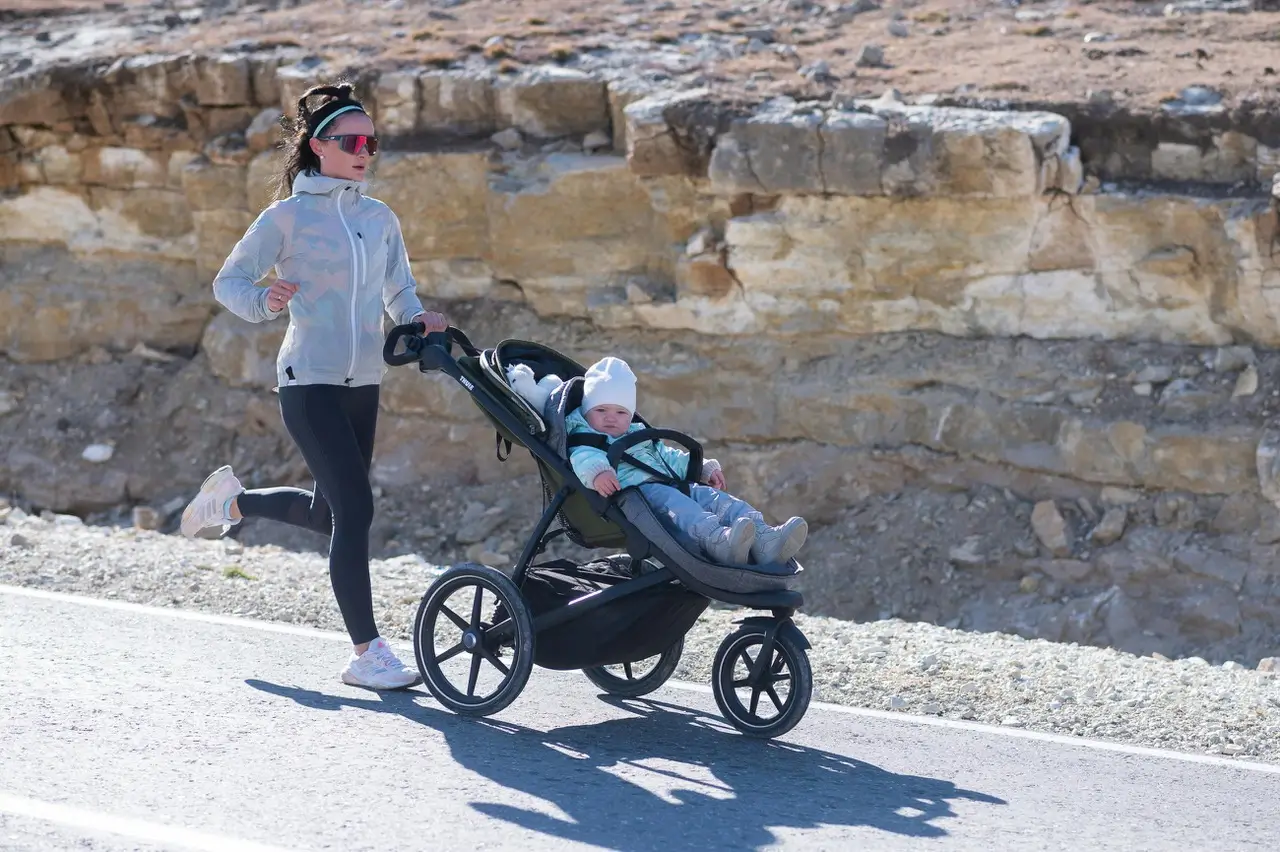

Thinking about running after pregnancy? We always recommend booking in with your physiotherapist to get a full clearance, as there are so many factors that come into play and we always want you to return as safely as possible! BUT, we are all about helping you to prepare yourself for return to exercise, so here is a general guide on our top tips and considerations when starting to think about a return to running postnatally.
1. Why Consider Running With a Pram Postpartum?
For many new mums, running isn’t just about fitness — it’s a way to boost mental health, get outdoors, and share special time with your baby. But returning to running after pregnancy is very different from pre-baby training. Your body has gone through enormous change, your pelvic floor and core may still be recovering, and your baby’s safety comes first.
This guide will walk you through the essentials of postnatal running with a pram, including when to start, which strollers are safest, and how to protect your body.
2. When Can I Start Running With My Baby in a Pram?
The number one rule: don’t jog with your baby until they have strong head and neck control — usually around 6–8 months of age. This is when they can safely handle the movement and vibration of a jogging stroller.
Tips:
- Always check your stroller manufacturer’s guidelines.
- Car-seat attachments are for walking only, not running.
- Start with short walks before progressing to jogs, so your baby adapts gradually.
3. Choosing the Best Jogging Stroller
A regular stroller isn’t designed for running. For safety and comfort, look for a jogging stroller with:
- Three large wheels (air-filled tyres preferred)
- A lockable front wheel for stability
- A suspension system for shock absorption
- Five-point harness, brakes, and a wrist strap
- A canopy for sun protection
4. Recommended Jogging Pram Brands
Parents and reviewers consistently recommend:
- BOB Gear (Revolution Flex 3.0, Wayfinder)
- Thule Urban Glide 3
- UPPAbaby Ridge
- Guava Roam
- Baby Trend Expedition / Race Tec
- Chicco Activ3 / TRE
- Mountain Buggy Terrain
We have no affiliation with any of these brands
5. Am I Ready to Start Postnatal Running?
Running is a high-impact activity that places load on your pelvic floor, joints, and core. Before you begin:
- Can you walk briskly for 30 minutes without leaking, heaviness, or pain?
- Does your pelvic floor feel strong — no bulge, leakage, or dragging?
- Have you started rebuilding core and leg strength (bridges, squats, calf raises, balance)?
If not, or if you’re unsure, book a check with a pelvic health physiotherapist. A professional assessment helps reduce your risk of injury or pelvic floor symptoms.
6. Safe Technique for Running With a Pram
- Always use the wrist strap for control.
- Start with two hands on the pram; once confident, alternate one-handed pushing (swap sides regularly).
- Keep your posture tall, shoulders relaxed, elbows bent (not locked).
- Choose flat, smooth surfaces to begin with.
- Keep pram storage light and balanced.
7. Common Musculoskeletal Concerns
Running with a pram changes your biomechanics. Some mums notice:
- Wrist or elbow pain → avoid gripping too tightly, keep elbows soft.
- Neck or shoulder tension → don’t hunch; relax your shoulders.
- Back or hip pain → often from leaning too far forward or pushing one-handed.
- Knee or ankle pain → can result from added load or progressing too quickly.
You may benefit from a postnatal strength program (link to exercise rehab or women’s health exercise service page) to improve endurance and reduce injury risk.
8. When to Stop Running
Pause and get checked if you experience:
- Urinary leakage, heaviness, or bulge in the pelvic area
- Ongoing pelvic, back, or abdominal pain
- Upper-limb pain (wrist, elbow, shoulder) that doesn’t ease
- Knee or ankle pain worsening with running
- Baby slumping forward, bouncing too much, or appearing uncomfortable
If symptoms appear, book a pelvic floor and core assessment (link to your assessment/consult page) before returning to running.
9. The Takeaway
Running with a pram can be a safe and enjoyable way to return to exercise after pregnancy. The keys are:
- Wait until your baby is ready (usually 6–8 months).
- Invest in a proper jogging stroller.
- Make sure your pelvic floor and core are ready.
- Listen to your body — and your baby.
10. Ready to Get Back to Running?
Not sure if your pelvic floor and core are ready for running with a pram? Our Pelvic Health Physiotherapists can assess your recovery, guide your return to exercise, and help prevent pain or leakage.
Book your Postnatal Running Readiness Check today and feel confident taking those first steps back into running.

